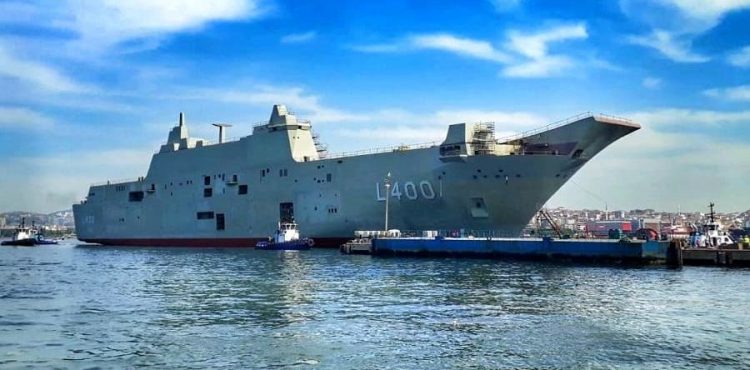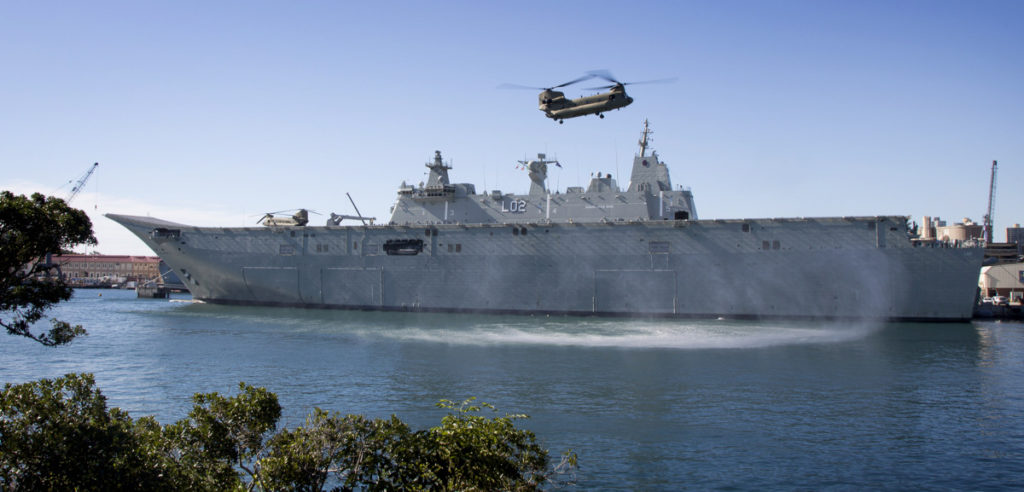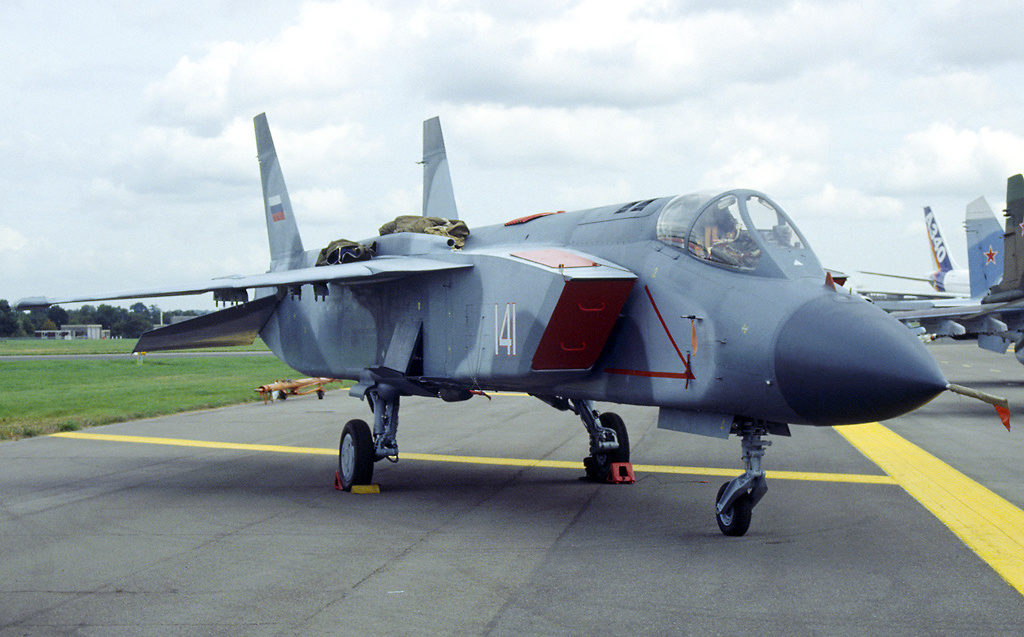
The Turkish Navy is facing a bit of a problem with regard to its putative naval air-arm after a glitch that some see as being similar to those the British have inflicted upon themselves in recent years.
Some ten years ago the Turkish defence ministry was looking into developing a force-projection capability based on a helicopter-carrying vessel capable of supporting amphibious operations. It was intended become a force-multiplier and to permit Turkey to consider itself a “global power”. Locally it was classified as a Multipurpose Amphibious Assault Ship, but regarded as an LHD in international terms.
(LHD standing for landing helicopter dock (LHD), denoting a multipurpose amphibious assault ship capable of operating helicopters and having a well-deck. LHD vessels are built with a full flight deck similar in appearance to an aircraft carrier to operate utility and attack helicopters. Wikipedia.)

The design was licensed from Navantia shipyard in Spain, which has also provided a lot of technology transfer and support.to the Turks. The Spanish Navy operates one such ship, the Juan Carlos 1. The RAN operates two versions called the Canberra Class, consisting of HMAS Canberra and Adelaide. The Royal Australian Navy emphasises that although the vessels are intended for amphibious assault operations, they are also ideally suited to humanitarian relief work, something that the Turks might not be highlighting today.

The Turkish ship, called, the TCG Anadolu, was specifically fitted with a flight deck capable of operating VSTOL aircraft in addition to helicopters. This was predicated upon having the naval version of the US-made F-35A jet, the F-35B, which has been purchased by the UK amongst others.
However, when the present president of Turkey decided to take his country down a rather less pro-NATO route, he became tempted by Mr Putin to buy the new Russian S-400 air-defence missile system. At once, the US advised him that it would be inconceivable for a country such as Turkey to be allowed access to the new aircraft with its stealth technology at the same time as having Russian technical experts installing an air defence system in the country. The obvious problem would be that the Russians could gain critical insights into weaknesses in the F-35’s stealth which would be of immense value to Mr Putin and his defence-chiefs for years or decades to come.
The US stuck to their guns and when the Turks took delivery of the first S-400 they were informed on the 17th July this year that the US deal was cancelled. And so the ship, which has cost a total of some $1bn and is due to be finished in just over a year, will be without any form of fixed-wing aircraft. That said, it is not impossible that the Russians have tried to console the Turks with the prospect of a future Russian VSTOL naval fighter jet. They have recently announced that Mr Putin has ordered the development of such an aircraft, possibly based upon work on the old Yak 141 VSTOL design.

In the meantime, it is assumed that the Turkish navy will be using its new ship in its intended original role as a helicopter-carrying amphibious landing vessel. However, as was pointed out in a recent TMT article, the Royal Navy could well do with a capable helicopter carrier to replace HMS Ocean for work in the Gulf. We could, presumably, even operate our own F-35Bs from the ship.
A Crowd-Funding project perhaps?

Comments on A truly British–style crisis